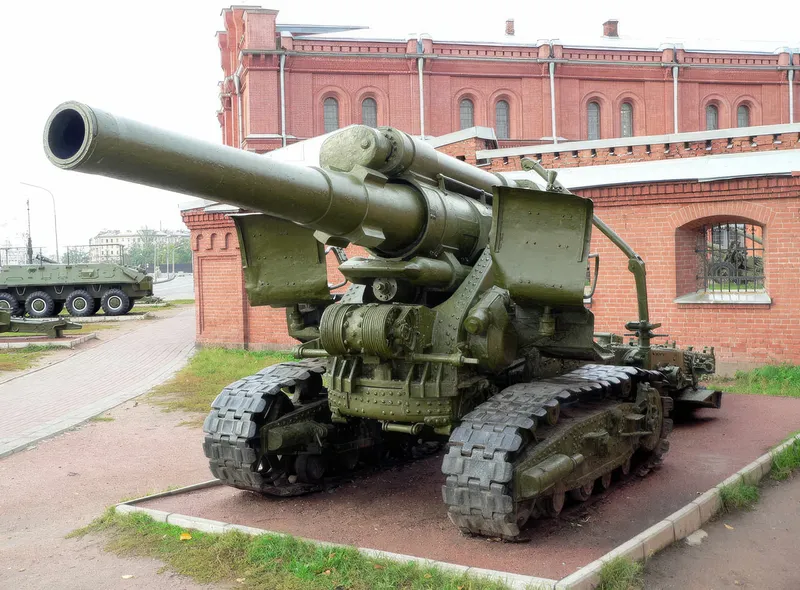
203 mm M1931 B-4 | |
|---|---|
| Country | URSS |
| Type | Heavy Howitzer |
| Produced | 1932-1940s |
| Built | 871 |
203 mm howitzer M1931 was a 203 mm Soviet heavy howitzer. During the Second World War, it was under the command of the Stavka’s strategic reserve. It was nicknamed “Stalin’s sledgehammer” by German soldiers. These guns were used with success against heavy German fortifications and in urban combat for crushing protected buildings and bunkers. This weapon was used until the end of the war in the Battle of Berlin where the Red Army would bring these guns up at point blank range to smash German fortifications with their heavy 203mm shells. In the spring of 1944, a KV-1s tank chassis was used to create a self-propelled variant, the S-51. The heavy recoil from the muzzle blast threw the crew off their seats and damaged the transmission, and so it was cancelled.
| Howitzer 203mm M1931 B4 | |
|---|---|
| Photographer | Unknow |
| Localisation | Unknow |
| Photos | 200 |
| 203 mm Howitzer Mod. 1931 (B-4) | |
|---|---|
| Photographer | Unknow |
| Localisation | Unknow |
| Photos | 21 |
See also:
General Overview
The B-4 was a Soviet high-power heavy howitzer used to destroy heavily fortified positions and bunkers during World War II.
| Official Name | 203 mm howitzer M1931 (B-4) |
|---|---|
| Place of Origin | Soviet Union |
| Manufacturer | Barrikady Plant |
| Production Years | 1932–1945 |
| Primary Role | Siege Artillery / Crushing Fortifications |
| Nickname | Stalin’s Sledgehammer (coined by German soldiers) |
Technical Specifications
| Caliber | 203 mm (8 inch) |
|---|---|
| Mass (Combat) | 17,700 kg (39,022 lbs) |
| Mass (Travel) | 19,000 kg (41,888 lbs) |
| Shell Weight (HE) | 100 kg (220 lbs) |
| Maximum Firing Range | 18 km (11 mi) |
| Rate of Fire | Approx. 1 round every 4 minutes (Slow due to shell weight) |
| Carriage Type | Tracked Carriage (Unique feature for stability) |
| Crew | 15 |
| Towing Vehicle | Voroshilovets or Komintern Artillery Tractor |
Operational Role in WWII
The B-4 was held under the direct command of the Stavka Strategic Reserve and was deployed only where its massive firepower was required.
- Winter War: Known as the “Karelia Sculptor” for its effectiveness against Finnish pillboxes on the Mannerheim Line.
- Urban Combat: Used for direct fire against German fortified buildings and bunkers, notably during the Battle of Berlin in 1945.
- Loading Challenge: Due to the heavy 100 kg projectile, a special hoisting crane was often used to assist in loading the breech.
Key Innovation: The unique tracked carriage allowed the gun to be fired directly from the ground without a separate firing platform, a significant innovation for heavy artillery of that era.
Views : 11564

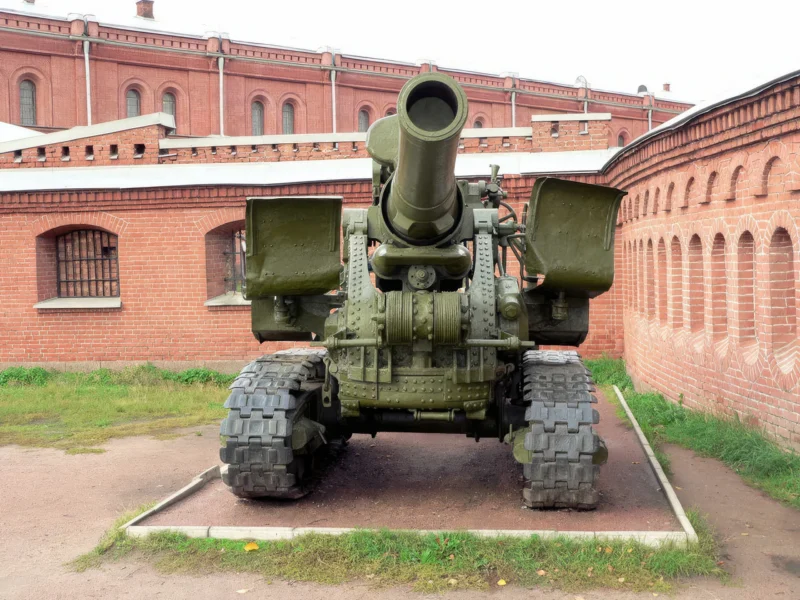
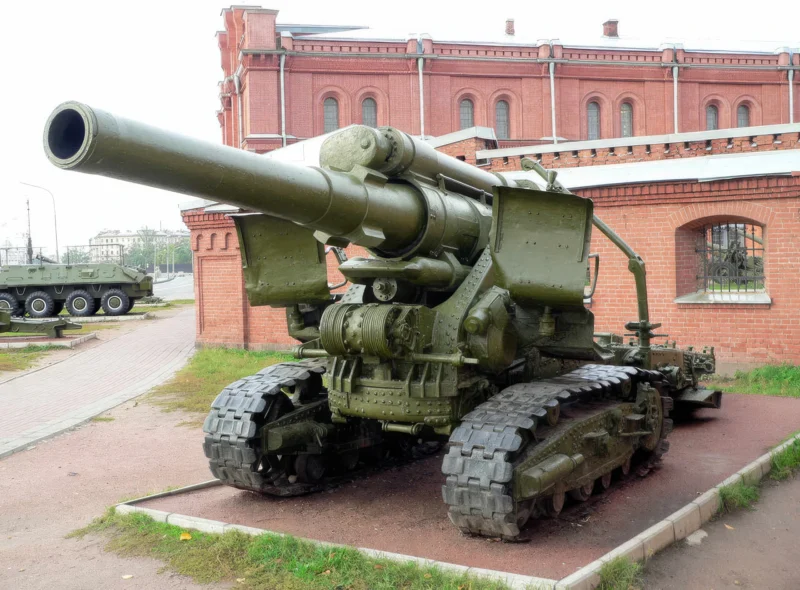
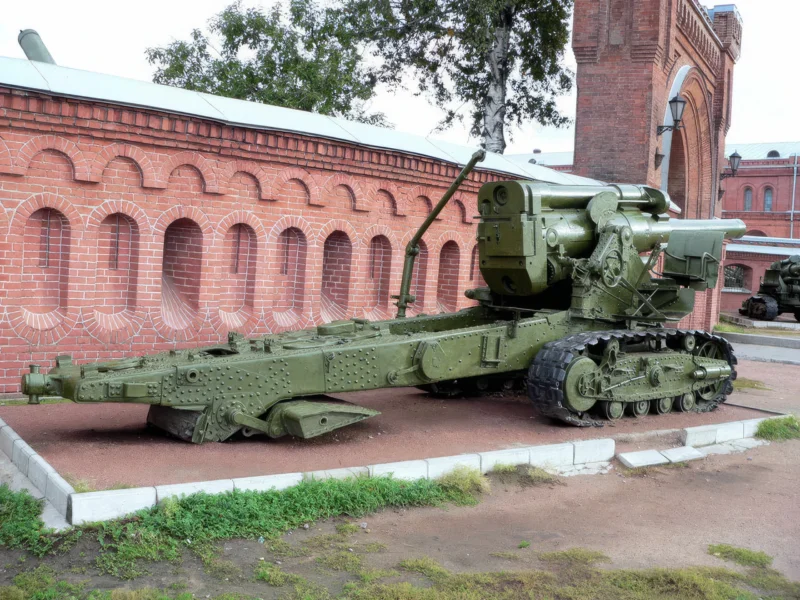
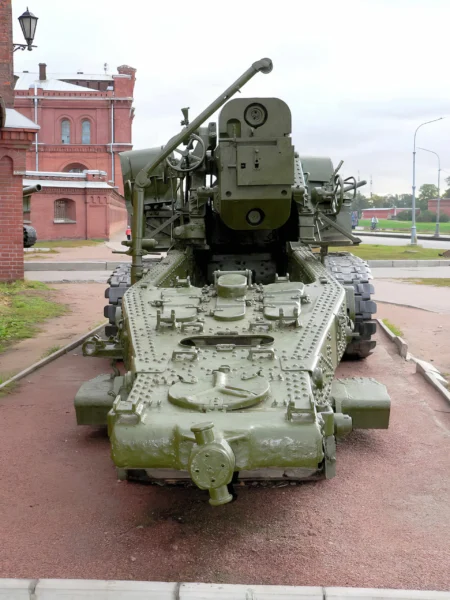
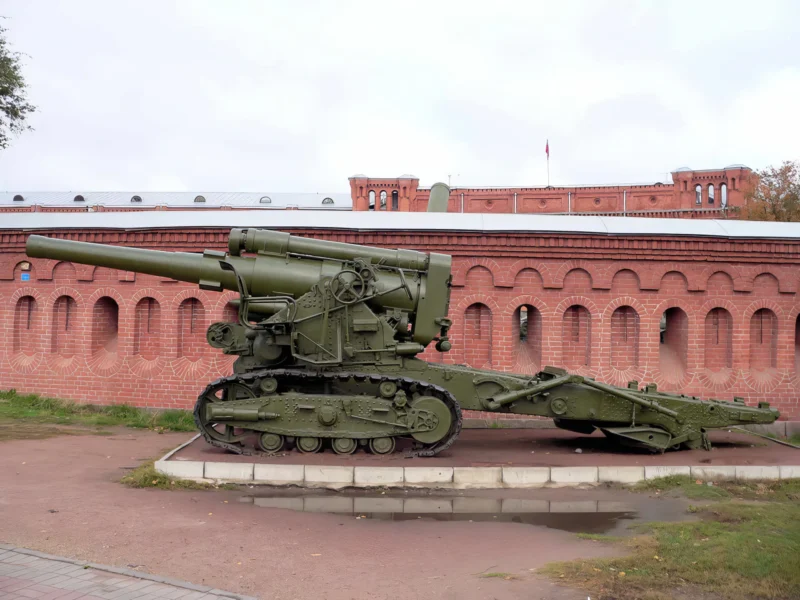
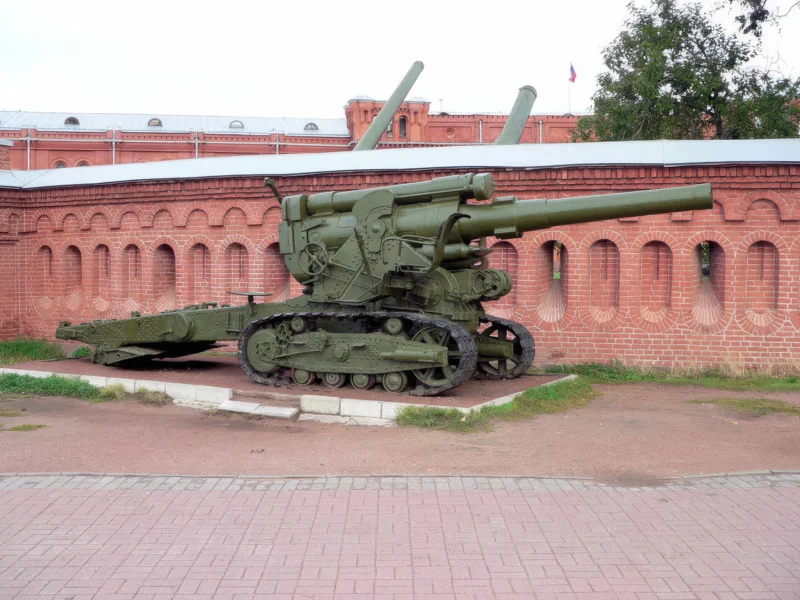
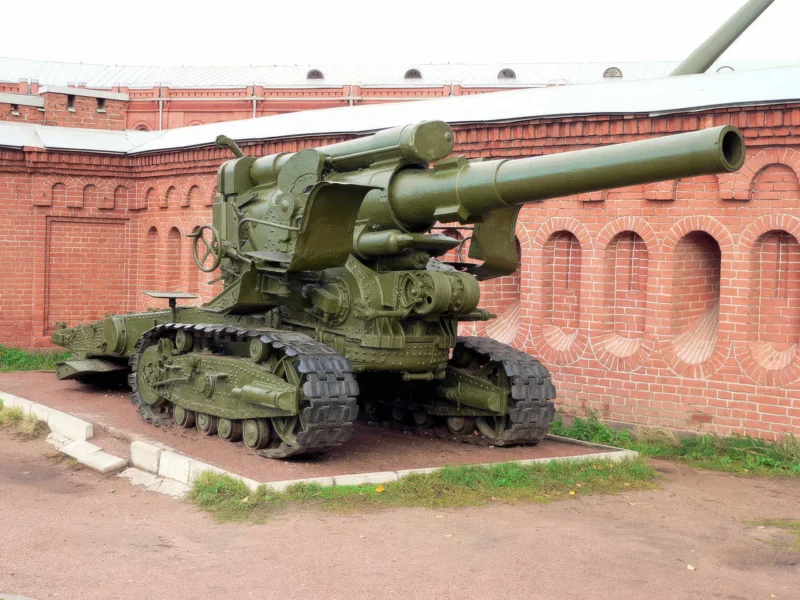
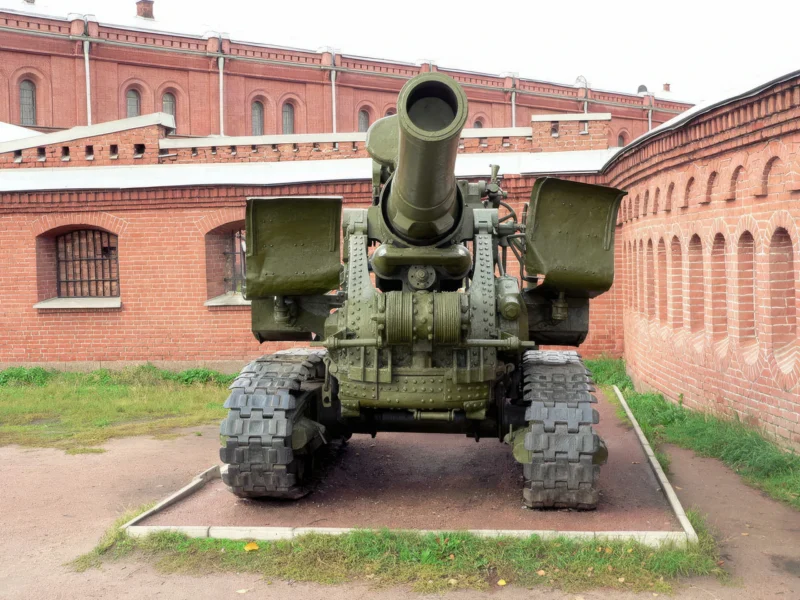


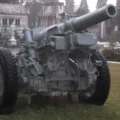


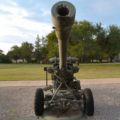
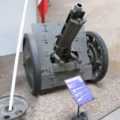
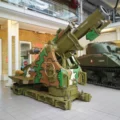
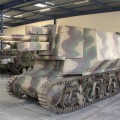
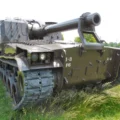

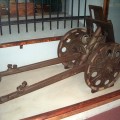
New photos